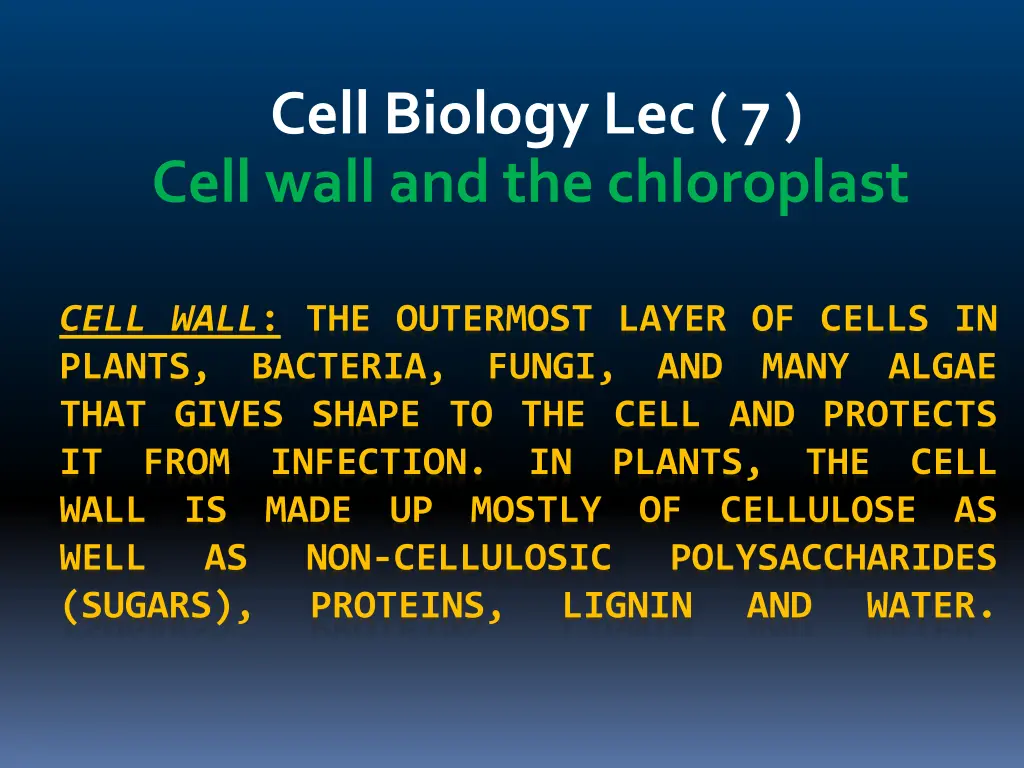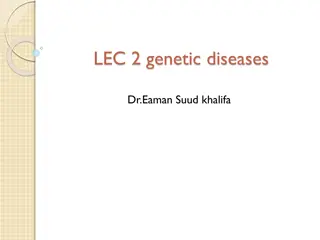
Cell Wall and Chloroplast: Structure, Function, and Division
Explore the significance of the cell wall in plants, bacteria, and fungi, providing shape, protection, and support. Learn about the layers of the cell wall, functions, and how plant cell division differs due to the presence of cell walls. Discover the role of chloroplasts in photosynthesis and the diversity of plastids in plant cells.
Download Presentation

Please find below an Image/Link to download the presentation.
The content on the website is provided AS IS for your information and personal use only. It may not be sold, licensed, or shared on other websites without obtaining consent from the author. If you encounter any issues during the download, it is possible that the publisher has removed the file from their server.
You are allowed to download the files provided on this website for personal or commercial use, subject to the condition that they are used lawfully. All files are the property of their respective owners.
The content on the website is provided AS IS for your information and personal use only. It may not be sold, licensed, or shared on other websites without obtaining consent from the author.
E N D
Presentation Transcript
Cell Biology Lec ( 7 ) Cell wall and the chloroplast CELL WALL: THE OUTERMOST LAYER OF CELLS IN PLANTS, BACTERIA, FUNGI, THAT GIVES SHAPE TO THE CELL AND PROTECTS IT FROM INFECTION. IN WALL IS MADE UP MOSTLY WELL AS NON-CELLULOSIC (SUGARS), PROTEINS, AND MANY ALGAE PLANTS, OF POLYSACCHARIDES LIGNIN AND THE CELL AS CELLULOSE WATER.
Cell wall consists of: 1. Middle lamella: is first layer formed during cell division. This layer rich in pectin and joins together adjacent plant cells and holds them together. 2.Primary cell wall: It is formed after the middle lamella.in general it is a thin, flexible and extensible layer composed of cellulose, pectin and hemicelluloses. 3.Secondary cell wall: formed inside the primary cell wall. It is a thick layer rich in lignin that strengthens and waterproofs the wall and is formed inside the primary cell wall that has stopped increasing in surface area when the cell is fully grown.
Figure (1): the plant cell wall structure
Cell Wall Function: 1-Gives the cell a definite shape and structure. 2- Provides structural support. 3- Protection against infection and mechanical stress. 4- Separates interior of the cell from the outer environment. 5- It enables transport of substances and information from the cell insides to the exterior and vice versa. 6- Helps in osmotic-regulation. 7- Prevents water loss. 8- The physiological and biochemical activity of the cell wall helps in cell-cell communication.
Plasmodesmata: are small holes in the wall that let nutrients, waste, and ions pass through.
CELL WALL DIVISION: PLANT CELLS HAVE WALLS, SO CYTOKINESIS CANNOT PROCEED WITH A CLEAVAGE FURROW. INSTEAD, DURING TELOPHASE A CELL PLATE FORMS ACROSS THE CELL IN THE LOCATION OF THE OLD METAPHASE PLATE.
The chloroplast and other plastids In 1883 Schimper first used the term "Plastid" for special cytoplasmic organelles presentin eukaryotic plant cells. Chloroplast is characterized by the presence of pigments such as chlorophyll and carotenoids and by their fundamental role in photosynthesis. There are other colored plastids these are grouped under the name chromoplasts. Yellow or orange chromoplasts occur in petals, fruits, and roots of certain higher plants. Red color of ripe tomatoes is the result of chromoplasts that contain the red pigment lycopene. Colorless plastids or leucoplasts are found in embryonic and germ cells.
Figure (3): chloroplast and photosynthesis in higher plants



![Lec [2] Health promotion](/thumb/274962/lec-2-health-promotion-powerpoint-ppt-presentation.jpg)
